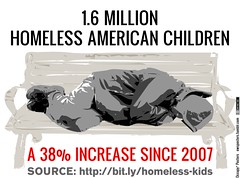On July 1, 2013, New London County, Connecticut’s homeless picture should change substantially as regional homeless services shift to the goal of “Rapid Re-housing.” This strategy will actually put the county ahead of new HUD goals that call for limiting the stay in a homeless shelter to no more than 30 days and reducing the number of people entering the shelter for the first time.
The New London Homeless Hospitality Center declares that its Help Center will aid homeless people working on housing plans, find jobs and assist them in applying for Social Security and other benefits. The Norwich Community Care Team, which has closed its annual winter overnight shelter, just received City Council permission to convert its annual $30,000 federal community development block grant from shelter operation to rapid re-housing.
Many county homeless have some income but cannot afford pricey local rents and security deposits. The Hospitality Center is seeking funding to provide help ranging from bus fare to job interviews or a Social Security hearing to “topping off” someone’s monthly rent. Also, the area has a lot of derelict houses that could be fixed up for needed low-income housing, thereby also providing new jobs.
Homeless advocates and service providers agree that finding housing, whether it be supportive housing, shared apartments, transitional housing or even substance abuse treatment centers, is better than a lingering shelter stay.
Lee Ann Gomes, Norwich Human Services social work supervisor and a member of the Norwich Community Care Team said, rapid re-housing is much less expensive than running a shelter:
I estimate that the cost per person per year to house someone in a shelter is $990, while the rapid re-housing cost would be $363 on average, with some needing very little assistance and others needing more funding.
“The Community Care Team might provide small rental subsidies to people at risk of becoming homeless to keep them in their current housing. Or the fund could help pay a security deposit or first month rent to a working homeless person needing an apartment.
Gomes said in one recent case a person had family in Massachusetts willing to provide housing and needed only the bus fare to get there. Another family was staying at a relative’s house but literally had no beds to sleep on, so the fund could pay for beds to keep the family intact. Instead of sending people to shelter this coming winter, a caseworker will work with the homeless person to find housing as rapidly as possible.
Facilities and organizations in New London, Norwich and other county towns are now thinking regionally to solve homeless problems.
Lisa Tepper Bates, executive director of the Mystic Area Shelter and Hospitality Inc. and coordinator of the family services portion of the New London County fund, said her group argued successfully before the legislature this spring for renewed funding of up to $250,000 per year for two years in the new biennial state budget.
According to statistics provided to the legislature, 65 individuals in the region were re-housed in less than six months, and the average nightly shelter census dropped more than 30 percent from 2011 to 2012.The percentage of long-term stays also dropped, with about 62 percent of shelter residents staying for 30 or fewer days and 20 percent staying for more than 60 days, a drop of about 10 percent.
Tepper Bates said:
A shelter is still homelessness. Staying in a shelter is a stressful time for adulthood, and doubly or more so for children. The faster we can help a family stay housed, the better we are as a community. The more families we can return to housing, the more we have done for those children. It’s profoundly important. There are very serious and potentially lifelong issues here.













 It is a fact of the modern, media-driven mentality that celebrities attract a lot of attention. This is frequently leveraged, where possible, to attract attention to causes of various sorts. Back in my home town of New Orleans, Brad Pitt is the resident champion of sustainable housing. Jerry Lewis has his famous telethon; Oprah consistently casts her spotlight on social issues, and so on.
It is a fact of the modern, media-driven mentality that celebrities attract a lot of attention. This is frequently leveraged, where possible, to attract attention to causes of various sorts. Back in my home town of New Orleans, Brad Pitt is the resident champion of sustainable housing. Jerry Lewis has his famous telethon; Oprah consistently casts her spotlight on social issues, and so on. Our very own Susan Madden Lankford was recently interviewed on Poverty Insights. For those unfamiliar with the website, here is a synopsis from its
Our very own Susan Madden Lankford was recently interviewed on Poverty Insights. For those unfamiliar with the website, here is a synopsis from its  There are many social obstacles for the homeless. Things that we take for granted in our day-to-day lives may suddenly become seemingly insurmountable problems. In many cases, it can turn out to be something no one thinks of.
There are many social obstacles for the homeless. Things that we take for granted in our day-to-day lives may suddenly become seemingly insurmountable problems. In many cases, it can turn out to be something no one thinks of.








